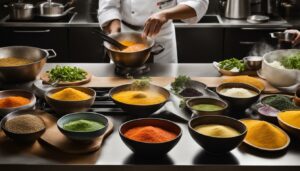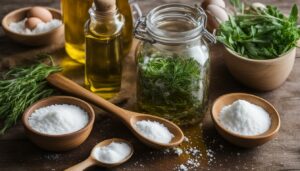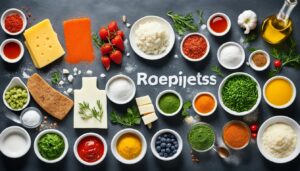Originally posted on November 11, 2023 @ 4:34 am
If you enjoy cooking and trying new recipes, chances are you’ve come across the term “divided” in recipe instructions. While it may seem confusing at first, understanding what “divided” means is a crucial skill in following recipes accurately and creating delicious dishes.
Divided refers to the act of separating an ingredient into a specific portion or amount before adding it to the dish. This process ensures that the ingredient is distributed evenly and adds the desired flavor or texture to the recipe.
For example, a recipe may call for “1 cup of shredded cheese, divided.” This means that you should measure out 1 cup of shredded cheese, then separate it into two 1/2 cup portions. One portion will be added to the dish at a specific time, while the other portion will be used later in the recipe.
By understanding what divided means in a recipe, you’ll be able to follow instructions more accurately and create dishes that are full of flavor and texture.
Contents
- 1 Defining ‘Divided’ in Cooking Terminology
- 2 Dividing Ingredients: How and Why
- 3 Decoding Divided Measurements
- 4 Recipe Instructions: Handling Divided Ingredients
- 5 Techniques for Dividing Ingredients
- 6 Common Mistakes to Avoid
- 7 Expert Advice: Innovating with Divided Ingredients
- 8 Conclusion
- 9 FAQ
- 9.1 What does “divided” mean in a recipe?
- 9.2 How does “divided” relate to cooking measurements?
- 9.3 Why do some recipes require dividing ingredients?
- 9.4 How can I effectively divide ingredients in a recipe?
- 9.5 How should I handle divided ingredients when following recipe instructions?
- 9.6 What techniques can I use for dividing ingredients?
- 9.7 What are common mistakes to avoid when dealing with divided ingredients?
- 9.8 How can I innovate with divided ingredients?
Key Takeaways:
- Divided refers to separating an ingredient into a specific portion or amount before adding it to a dish
- This process ensures even distribution of the ingredient and adds desired flavor or texture to the dish
- Understanding what divided means is crucial for following recipe instructions accurately
Defining ‘Divided’ in Cooking Terminology
Before we dive into the specifics of dividing ingredients in a recipe, let’s define what we mean by “divided” in the context of cooking. Simply put, when a recipe calls for an ingredient to be divided, it means that you will need to use that ingredient in different amounts at various stages of the recipe.
For example, a recipe may call for three cups of flour, divided, which would mean that you’ll use one cup at the beginning of the recipe, one cup in the middle, and the last cup towards the end of the recipe.
Dividing ingredients is typically used to enhance the flavors of a dish, ensuring that each ingredient is incorporated evenly throughout the recipe. This technique is especially important when working with strong flavors, such as herbs and spices.
Divided in Cooking Measurements
When it comes to dividing ingredients in cooking, there are a few different ways to measure and portion them:
| Type of Measurement | Description |
|---|---|
| Volume | The most common method of measuring ingredients, often using cups or tablespoons. |
| Weight | Used primarily for baking, ingredients are measured by weight using a kitchen scale. |
| Fractions | Recipes may call for ingredients to be divided into specific fractions, such as 1/3 or 1/4. |
It’s important to follow the recipe instructions carefully when dividing ingredients, taking note of the specific measurement method used. Using the wrong measurement method can drastically alter the outcome of a dish.
Divided Definition in Cooking
As we’ve mentioned, dividing ingredients in cooking is all about ensuring even distribution of flavors throughout a recipe. This is especially important for dishes that have long cooking times, as the ingredients may not have enough time to fully mingle otherwise.
Dividing ingredients is also a way to layer flavors, adding complexity and depth to a dish. For example, a recipe may call for onions to be divided and cooked separately before adding them to the rest of the dish. This allows the onions to caramelize and develop a deeper flavor before being mixed in with the other ingredients.
Overall, understanding how to divide ingredients in a recipe is an essential skill for any cook. By following recipe instructions carefully and using the appropriate measurement methods, you’ll be able to create delicious dishes with complex and nuanced flavors.
Dividing Ingredients: How and Why
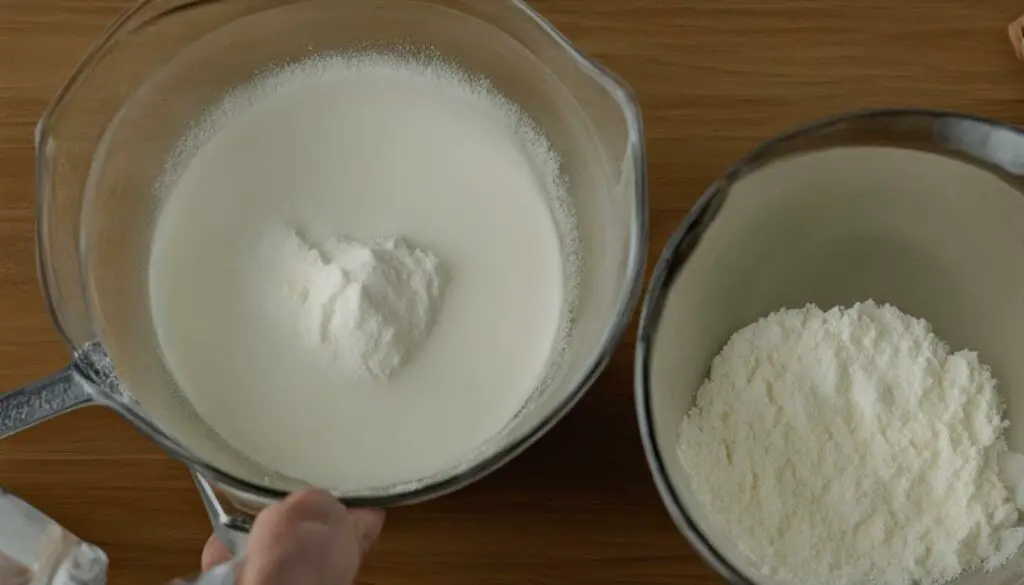
Dividing ingredients is a cooking technique that is used to distribute flavors evenly throughout a dish. It is especially important when incorporating ingredients that have a strong taste or aroma, as they can overpower the other components if not properly distributed. The process of dividing ingredients also helps to achieve a consistent texture and appearance.
There are different ways to divide ingredients in a recipe depending on the type of dish you are making. For instance, if you are making a layered cake, you may need to divide the dry ingredients and the wet ingredients separately to ensure the cake is light and fluffy. If you are making a stir-fry, you may need to divide the vegetables, meat, and sauce so that they each cook at the appropriate temperature and rate.
Here are some tips on how to effectively divide ingredients:
- Mise en place: Before you start cooking, make sure all your ingredients are prepped and ready to go. This will make the process of dividing ingredients smoother and more efficient.
- Use measuring tools: To get accurate measurements, use measuring cups, spoons, and kitchen scales. This will ensure that you have the right amount of each ingredient.
- Divide evenly: Divide the ingredients as evenly as possible to ensure that each component of the dish is properly represented. If a recipe calls for dividing an ingredient into thirds, use a scale or measuring cup to ensure that each portion is equal.
- Label ingredients: If you are dividing ingredients ahead of time, be sure to label each container with the name of the ingredient and the amount. This will prevent confusion later on.
Dividing Ingredients in a Recipe: Example
Here is an example of how to divide ingredients in a recipe:
Ingredient Measurement Divided Flour 2 cups 1 cup, 1 cup Sugar 1 cup ½ cup, ½ cup Baking powder 2 tsp 1 tsp, 1 tsp Salt ½ tsp ¼ tsp, ¼ tsp In this recipe, the dry ingredients need to be divided to make a cake. The flour, sugar, baking powder, and salt are all divided in half to ensure even distribution. This will help to create a light and fluffy cake with a consistent texture and flavor.
By mastering the technique of dividing ingredients, you’ll be able to tackle complex recipes with ease and achieve consistently delicious results.
Decoding Divided Measurements

Divided measurements in recipes can be confusing at first, but with practice, you’ll get the hang of it. Here are some ways ingredients can be divided in recipes:
- By volume: This means the ingredient is separated into equal parts by using measuring cups or spoons. For example, a recipe might say “1 cup of flour, divided” which means you need to separate the flour into two equal parts of 1/2 cup each.
- By weight: This means the ingredient is separated into equal parts by using a kitchen scale. For example, a recipe might say “4 ounces of chicken breast, divided” which means you need to separate the chicken breast into two equal parts of 2 ounces each.
- By fractions: This means the ingredient is separated by using fractions, such as 1/2, 1/3, or 1/4. For example, a recipe might say “1/2 cup of sugar, divided” which means you need to separate the sugar into two equal parts of 1/4 cup each.
When working with divided measurements, it’s essential to be precise. Here are some cooking tips to ensure accuracy:
- Use the appropriate measuring tools such as measuring cups, spoons, and a kitchen scale.
- Double-check your measurements to ensure you’re dividing ingredients evenly.
- Label your divided ingredients to avoid confusion.
- If you don’t have the exact measuring tool, do some quick calculations to ensure you divide the ingredient as accurately as possible.
Here’s a helpful table to show you some common divided measurements in recipes:
| Measurement | Divided Measurement |
|---|---|
| 1 cup | 1/2 cup, 1/3 cup, or 1/4 cup |
| 1 tablespoon | 1 1/2 teaspoon or 1 teaspoon |
| 1 teaspoon | 1/2 teaspoon or 1/4 teaspoon |
By understanding how to read and work with divided measurements, you’ll be able to tackle any recipe with confidence.
Recipe Instructions: Handling Divided Ingredients
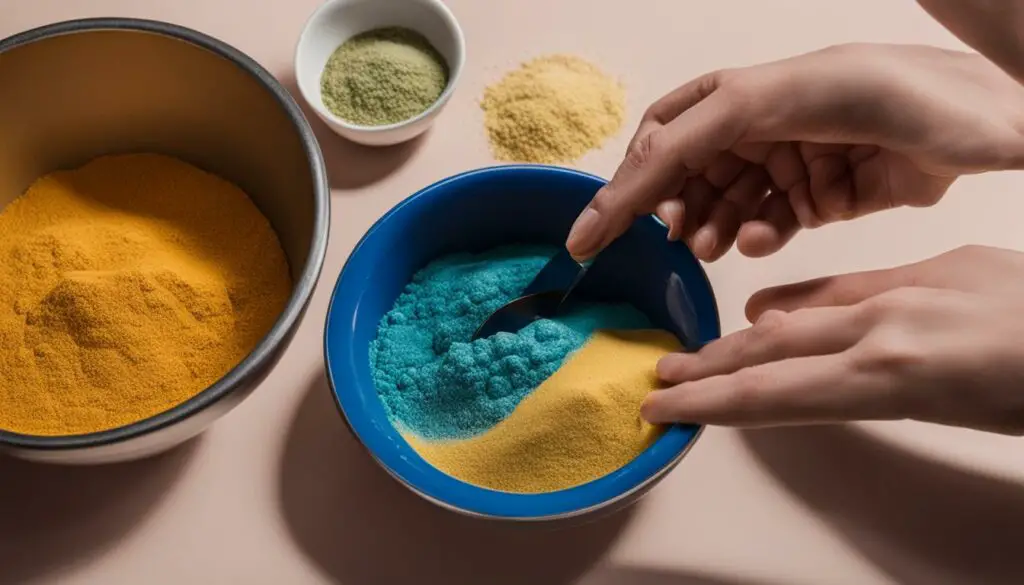
When following a recipe that includes divided ingredients, it’s essential to understand how to handle them correctly to ensure your dish turns out as intended. The following steps will guide you through common scenarios:
Sautéing Divided Ingredients
If a recipe instructs you to sauté divided ingredients, start by sautéing the ingredients that require a longer cooking time before gradually adding in the remaining ingredients. This technique ensures that all ingredients are cooked evenly and prevents overcooking the delicate ones.
Mixing Divided Ingredients
When mixing divided ingredients, it’s crucial to ensure that each portion is mixed thoroughly before adding in the next one. This technique assures that flavors are properly blended and distributed throughout the dish.
Baking Divided Ingredients
When baking with divided ingredients, it’s essential to follow the recipe’s instructions precisely. If a recipe calls for different parts of the dish to be baked at different times, it’s essential to follow those instructions to avoid overcooking or undercooking the dish.
“When mixing divided ingredients, it’s crucial to ensure that each portion is mixed thoroughly before adding in the next one.”
By understanding how to handle divided ingredients in various scenarios, you can confidently follow recipe instructions and achieve consistently delicious results.
Techniques for Dividing Ingredients
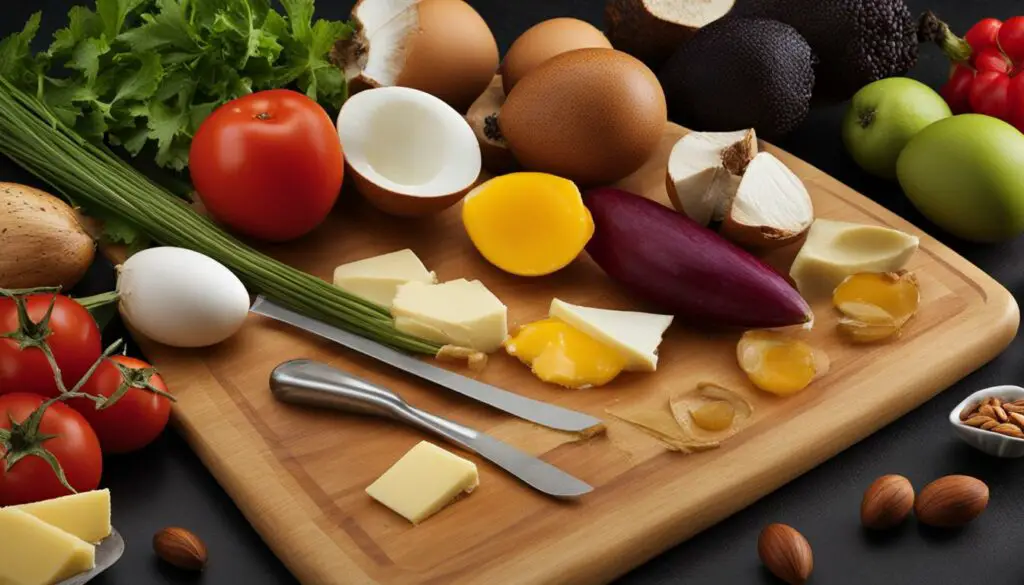
Dividing ingredients in recipes can be a challenge for novice cooks, but with practice and patience, it becomes much easier. In this section, we’ll explore some popular techniques for dividing ingredients in your favorite recipes. By following these tips, you’ll be able to distribute the flavors evenly and create delectable dishes.
Technique #1: Portioning
Portioning is an essential technique that involves dividing the ingredients based on the number of servings the recipe will yield. For instance, if you’re making a dish that serves four people and requires two cups of flour, you’ll need to divide the flour into four equal portions of half a cup each. This method ensures that each serving receives an equal amount of flour and helps the dish cook more evenly.
Technique #2: Layering
Layering is another technique that’s commonly used in recipes that require a sauce or dressing. To layer ingredients, you’ll need to divide the sauce or dressing into separate portions and layer it over the other ingredients in the dish. This technique helps to distribute the flavors more evenly and ensures that each bite is full of deliciousness.
| Recipe | Ingredients | Layering |
|---|---|---|
| Greek Salad | Feta cheese, olives, tomatoes, red onion, lettuce, olive oil, red wine vinegar, oregano | Layer the vegetables and cheese in a bowl. Whisk together the olive oil, red wine vinegar, and oregano in a separate bowl, then divide the dressing evenly over the salad. |
Technique #3: Separating
Separating is a technique that’s used when a recipe requires ingredients to be added at different stages of the cooking process. For example, a recipe might call for onions to be divided into two portions, with one portion added at the beginning and the other added towards the end of the cooking process. Separating ingredients ensures that they cook perfectly and enhances the flavor of the dish.
Dividing ingredients is a crucial step in achieving success in the kitchen. By using these techniques, you’ll be able to distribute the flavors evenly and create dishes that are bursting with flavor. Remember to always follow recipe instructions accurately and practice your skills regularly to become a master at dividing ingredients.
Common Mistakes to Avoid

Working with divided ingredients can be challenging, and even the most experienced cooks can make mistakes. Here are some common errors to avoid when handling divided ingredients:
- Not measuring accurately: It’s essential to measure ingredients precisely, especially when they are divided. Even a small measurement mistake can throw off the entire recipe.
- Mixing up the divided ingredients: When dividing ingredients, it’s important to keep them separate until specifically instructed to combine them. Mixing them up can result in an unbalanced dish.
- Forgetting to label the divided ingredients: It’s easy to forget which measurement of an ingredient has been divided when preparing multiple ingredients at once. Labelling the containers can save time and confusion.
- Not following recipe instructions: Divided ingredients are often used to achieve specific flavor and texture balance in a recipe. Failing to divide ingredients or ignoring recipe instructions can lead to disappointing results.
By keeping these common mistakes in mind, you can avoid recipe mishaps and achieve consistently delicious results when working with divided ingredients.
Expert Advice: Innovating with Divided Ingredients

Dividing ingredients in recipes can be challenging, but it also presents an opportunity to get creative in the kitchen. By exploring different techniques and flavor combinations, you can take your dishes to the next level. Here are some expert tips on how to innovate with divided ingredients:
Flavor Layering
Layering flavors is an effective way to enhance the taste of a dish. When dividing ingredients, try layering them in a way that allows the flavors to meld together. For instance, if you’re making a lasagna, consider dividing the cheese into two portions and layering it between the pasta and the sauce. This will create a more complex and satisfying flavor profile.
Visual Presentation
The way a dish looks can greatly impact how it is perceived. When working with divided ingredients, think about how you can create an appealing visual presentation. For example, if you’re making a salad, divide the ingredients into separate sections and arrange them in a visually pleasing way. This will make the dish more exciting and appetizing.
| Divided Salad Ingredients | Assembly Instructions |
|---|---|
| Greens | Spread evenly on the bottom of the plate |
| Sliced tomatoes | Arrange in a circle on top of the greens |
| Sliced cucumber | Arrange in a circle on top of the tomatoes |
| Crumbled feta cheese | Evenly distribute on top of the cucumber |
| Sliced red onion | Arrange in a circle on top of the feta cheese |
| Toasted pine nuts | Sprinkle on top of the salad |
Alternative Ways to Divide Ingredients
Dividing ingredients doesn’t always have to mean separating them into equal portions. Get creative with how you divide your ingredients to add more interest to a dish. For example, instead of dividing a vegetable into two portions, try slicing it differently. You could cut it into long, thin strips or dice it into small cubes. This will give the ingredient a different texture and change the way it interacts with the other components in the dish.
With these expert tips, you’re equipped to take on any recipe that calls for dividing ingredients. By experimenting with different techniques, you’ll be able to elevate your dishes and impress your dinner guests. Happy cooking!
Conclusion
In conclusion, understanding the term “divided” is an essential aspect of cooking that can elevate your culinary skills. Whether you’re a beginner or an experienced cook, this guide has provided valuable insights into working with divided ingredients. By following recipe instructions accurately, dividing ingredients effectively, and avoiding common mistakes, you can achieve consistently delicious results in the kitchen.
Tips for Success
Remember these key tips to master divided ingredients and take your cooking to the next level:
- Always read recipe instructions thoroughly before beginning.
- Pay attention to the specific measurements and techniques for dividing ingredients.
- Use proper measuring tools to ensure accurate results.
- Be mindful of common mistakes and take steps to prevent them.
- Experiment with innovative ways to divide and combine ingredients for unique flavor profiles and stunning visual presentation.
By incorporating these tips and techniques into your cooking, you’ll be on your way to becoming a confident and skilled chef in no time.
Thank you for reading, and happy cooking!
FAQ
What does “divided” mean in a recipe?
When a recipe uses the term “divided,” it means that the ingredient specified should be separated into different portions before being added to the recipe. This is done to ensure that the ingredient is used at the appropriate stages of cooking or to create a layered effect in the dish.
How does “divided” relate to cooking measurements?
“Divided” in cooking measurements refers to dividing the specified quantity of an ingredient into separate portions. For example, if a recipe calls for 1 cup of diced tomatoes, divided, you would measure out 1 cup of diced tomatoes and then separate it into smaller portions as instructed in the recipe.
Why do some recipes require dividing ingredients?
Dividing ingredients in a recipe helps distribute the flavors evenly throughout the dish. It can also be used to control the cooking process and create layers of flavor or texture. Recipes may call for dividing ingredients to ensure certain ingredients are added at specific times or to create visual appeal.
How can I effectively divide ingredients in a recipe?
To effectively divide ingredients in a recipe, start by carefully reading the instructions and understanding why the ingredient needs to be divided. Then, follow the recipe’s guidance on how to divide the ingredient, whether it’s by volume, weight, or using fractions. Pay attention to any specific techniques or tips provided to ensure accuracy.
How should I handle divided ingredients when following recipe instructions?
When following recipe instructions that involve divided ingredients, it is important to carefully read and follow each step. Make sure to add the divided portions at the specified times or layers as indicated in the recipe. This will help achieve the intended flavors and texture in the final dish.
What techniques can I use for dividing ingredients?
There are various techniques for dividing ingredients in recipes, including portioning, layering, or separating. Portioning involves dividing the ingredient into equal parts, while layering creates distinct layers of flavor or texture. Separating involves keeping different parts of the ingredient separate until they are needed in the recipe.
What are common mistakes to avoid when dealing with divided ingredients?
When working with divided ingredients, common mistakes to avoid include misreading the recipe instructions, forgetting to divide the ingredient at the specified times, or improperly measuring out the divided portions. It’s important to carefully follow the recipe and double-check your measurements to ensure accuracy.
How can I innovate with divided ingredients?
Divided ingredients offer opportunities for creativity in the kitchen. You can explore flavor layering by using different variations of the ingredient in each layer. Visual presentation can be enhanced by arranging divided ingredients in an appealing way. Additionally, you can experiment with alternative ways to divide ingredients, such as using different shapes or sizes.


